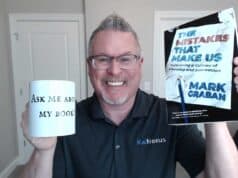I received a question from a reader that was also addressed on the Daily Kaizen blog and Gemba Panta Rei. This question is from a hospital setting, but I think it's a good general Lean question:
One our our struggles has been defining the best process for implementing lean. We are establishing a model line in food services and are looking to begin spreading to other departments. Our model line is still in a very early stage of development and we have only 2 engineers to support the hospital. Our focus has been to begin with a lean management system as a starting point. Some of the questions we have are:
- How far to we take the model line before moving out?
- How much training should we do beforehand?
- If we start with the lean management, how developed does this need to be before it is self sustaining?
- What should our implementation process look like?
- And the inevitable question of how much is too much change? (rhetorical)
After initial cop out (“give me more time to think about this… there are no easy answers”), here is what I wrote:
A quick answer (and maybe this will seem evasive) is to go through the PDCA process. Seems like you can pull back? Try it and see if the processes are being sustained. If not, jump back in, identify the root cause of the failure (lack of training, lack of time — not really an excuse really — misaligned incentives, etc). I'd make sure the burden of sustaining is NOT on the internal consultants. It needs to be on the shoulders of the leadership chain.
If a VP is not making sure a director's organization is sustaining, you need to coach both the director and the VP. The internal consultants can only coach and advise. That's not an excuse for the consultants to not care about the results, but the burden can't be on them, its not fair and its a workaround if the consultant makes it work for them.
If the consultant is involved daily, pull back gradually and see what happens (communicating this plan and making sure requirements of the line leaders is clear).
You will learn eventually, for your organization and your culture, what normally works. But each dept may be different.
I can usually tell early on which managers will actually sustain. If someone blows off the responsibilities of a lean manager by saying “Oh, I'm a hand's off manager” and they won't change… You might need to replace them. Managers can't always turn around.
I know I didn't touch on every aspect of his question. The reader wrote back and said it was a good answer, and that, basically, it's hard to fight the temptation to look for “best practices” instead of going through the learning journey.
What would you add?
Subscribe via RSS | Lean Blog Main Page | Podcast | Twitter @MarkGraban
Please scroll down (or click) to post a comment. Connect with me on LinkedIn.
Let’s build a culture of continuous improvement and psychological safety—together. If you're a leader aiming for lasting change (not just more projects), I help organizations:
- Engage people at all levels in sustainable improvement
- Shift from fear of mistakes to learning from them
- Apply Lean thinking in practical, people-centered ways
Interested in coaching or a keynote talk? Let’s talk.
Join me for a Lean Healthcare Accelerator Trip to Japan! Learn More










During the early days of the Chrysler Operating System about 15 years ago, we developed some of the more serious and early work on “model lines.” We called them Lean Learning Lines. We’ve continued over the many years developing that practice through many experiments and lessons learned and now call it a Lean Learning Laboratory. There are many versions of model lines. I’ve been in several companies where Toyota even visited to develop a model line and the group was wondering “what line was that anyway?” because the practice had disappeared.
What we’ve learned, and the mistakes we’ve made, could fill up a whole other blog, so I can barely begin to answer in the comments section.
There is a lot of thought behind the phrase Lean Learning Laboratory. To build a model line may only be to provide an example to people. But “Learning” means this model area is focus on generating the learning, both on the skills and tools of lean but also the leadership and transformation issues. It is also a place to experiment as a “Laboratory” which means you’re going to try things, AND FAIL, to figure out how lean will work best whether it’s how to work with your processes, your shift structure, your organizational structure or any one of a 100 things that might make lean hard.
A last note: how you transfer knowledge from one area to the rest of the organization is vital. Do not complete your model area and then say “OK, how do we learn from this?” You must pre-plan your learning. The people in the model area have a customer – it is everyone else. How they document their learnings, how they structure the experiments and who and how they engage others will be different if the rest of the organization is their customer of learning instead of only a barrier that holds them back from success.
I believe this strategy, what I like to call and “inch-wide, mile-deep” is a great investment for a lean journey. But it should be looked at as exactly that, an investment.
Splendid. Excellent post, realy helpful. Thank you!
Our corporate Lean leadership had the same mantra, “inch-wide, mile-deep”. However, the journey seemed to shift to an “inch deep, mile wide”. We were not digging deeper into Lean at our initial facilities, as we were attempting to facilitate Lean in too many other areas of the organization. This has been a topic of discussion recently. We’ve suffered in our implementation, as our Lean leadership was spread too thin.
Stick with Jamie’s theory and DO NOT become inch-deep, mile-wide. Have a ‘pilot’ or ‘learning’ area (or more, depending on the size of your organization) and always strive to keep that/those areas ahead of everyone else. Then bring everyone there to learn, hands-on.
Mike brings up another interesting point which as you plan your efforts, pre-plan points of reflection. This means where you will pause and take stock of where you are, what’s working, what’s not and where you need to head. This will prevent things from drifting slowly and unplanned from one focus to another. It might still shift, but you will do so purposefully. Good luck.
Pascal Dennis’ recent book Getting the Right Things Done provides a great roadmap for “going through the PDCA process” as Mark suggests. The sustaining piece is covered in the later parts of the book in the check, problem solve, adjust phases.
We’ve had lots of people read it and do what Pascal suggests, and the results are impressive. The key is to start working on and getting success against your biggest problems. That will fuel your next project, and is also a good way to involve senior leaders because they are the ones that want the biggest problems solved the most…
Comments are closed.